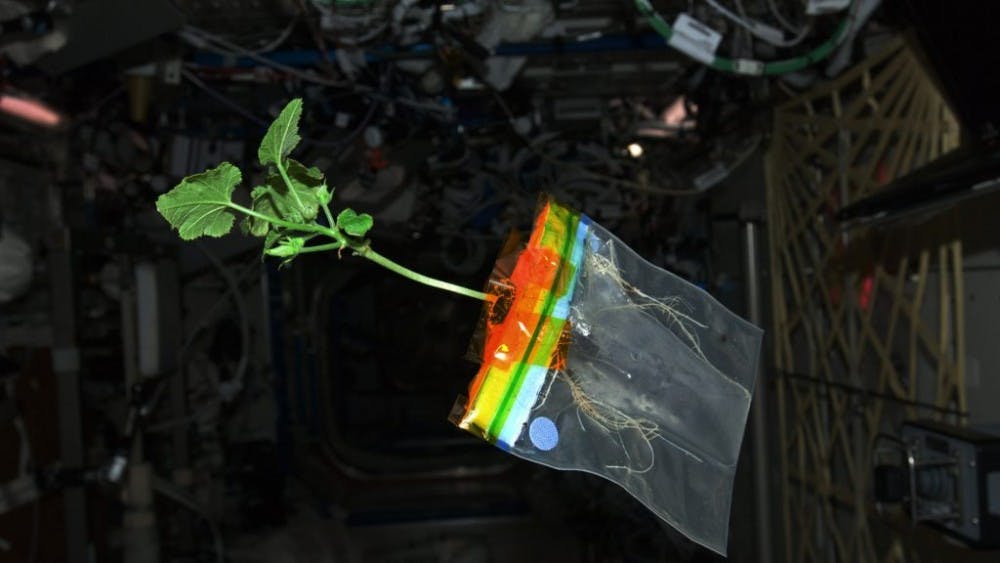In Andy Weir’s novel The Martian, Mark Watney colonized Mars by growing potatoes from his own fecal matter. In reality, that small piece of science fiction may not be so fictional after all.
Plants are actually considered essential to human survival on other planets; Not only do they provide a symbiotic relationship by consuming carbon dioxide and emitting oxygen, but they also serve as a source of food and a way of recycling water.
Now, research teams from Japan, Canada, China and other countries, have been working to solve the problem of how to make these plants not just grow, but thrive, in extraterrestrial environments. Raymond M. Wheeler, researcher from the Biological Sciences Office at NASA, recently published a paper that summarizes and relates the previous and ongoing research on this goal of cosmic plant growth.
This area of research is not a new field inspired by The Martian, but rather one that has been alive since the 1950s and 1960s. The studies began with research by the U.S. Air Force and NASA about how algae plays a role in the exchange of carbon dioxide and oxygen.
From there, research expanded internationally in the space race of the late 20th century. It was during this time that experiments were conducted in Russia to see if human life could be sustained in a closed environment using only crop plants. Eventually, similar programs reached the United States.
Meanwhile in Japan, scientists were attempting to do the same thing by enclosing two humans, two goats and a sizeable amount of crop plants, in order to simulate living in outer space. In their models, animal and human life was sustained in this small-scale replication of Earth, known as Closed Ecology Experiment Facilities (CEEF).
Then in the 1990s, this research spread to Canada, where very similar experiments tested how, in a closed environment, humans and plants would interact. The University of Guelph in Ontario proceeded to develop large chambers simulating an outer space environment.
These chambers were designed to test crop growth, and Guelph researchers have continued to expand the usage of these chambers to encompass a greater variety of agriculture.
The most recent advancement in developing a closed human-plant environment occurred in the early 21st century. A team of scientists at Beihang University in Beijing created what they call Lunar Palace 1.
Lunar Palace 1 is an acronym for the full research project name: Integrative Experimental Facility for Permanent Astrobase Life-support Artificial Closed Ecosystem (PALACE).
In 2014, the Lunar Palace 1 was tested on three human subjects who each spent 105 days in the PALACE. Two women and one man lived in 500 cubic meters of space, sharing it partly with each other and partly with various crops that were being tested to see how well they grew in these circumstances. The volunteers’ mental and physical health were also closely monitored.
In a press release in 2014, officials from the China Manned Space Engineering office stated, “The success of the experiment has laid [a] good foundation... which will be helpful for China’s astronauts to get fresh vegetables, improve their living conditions and relieve their mental stress.”
This research has gone from studies of algae to keeping humans alive in a closed environment with just plants and worms. Through this research, many breakthroughs have been made, such as a new way to grow crops through light-emitting diodes, vertical agriculture and new methods for water delivery.
Many other advancements in what we know about plants, new methods in how to grow plants and what exactly they can produce have been made as well.
This research is essential to humans’ potential long-term survival on planets other than Earth and can help current astronauts in space be healthier both mentally and physically. The history of the research, compiled by Wheeler, provides an extremely in-depth look at this developing research.
“His article should be required reading for anyone with even a passing interest in the Space Agriculture,” Gary Stutte, NASA principal investigator, said.





